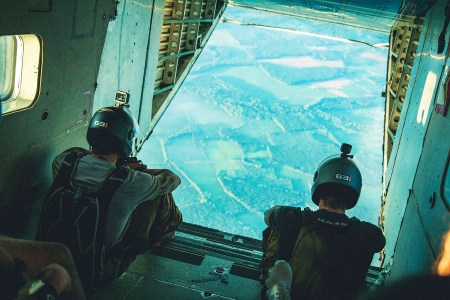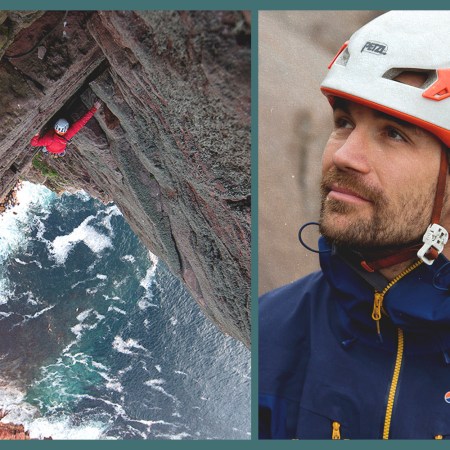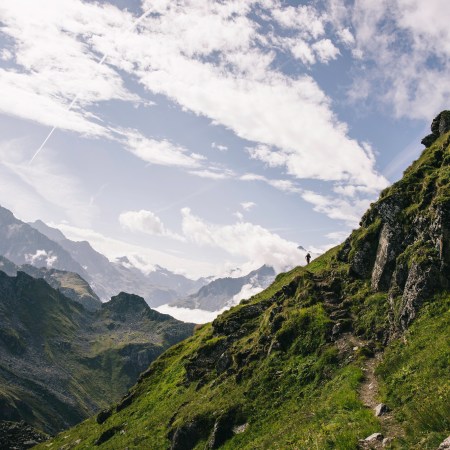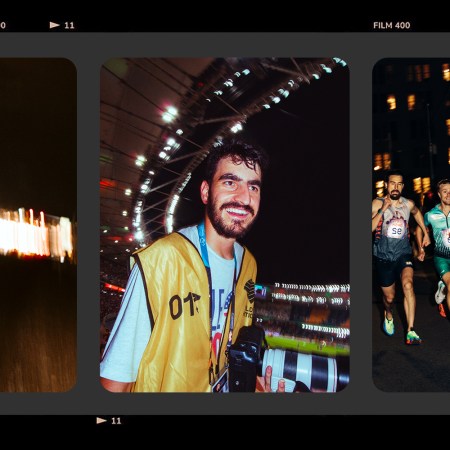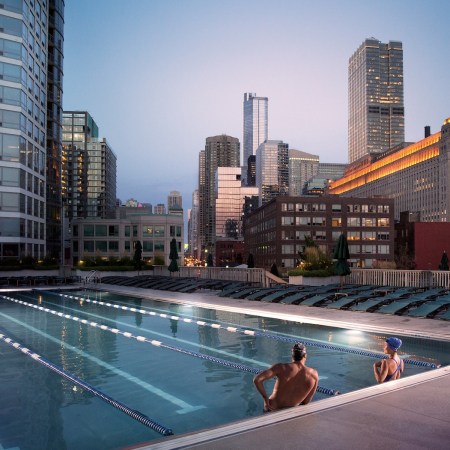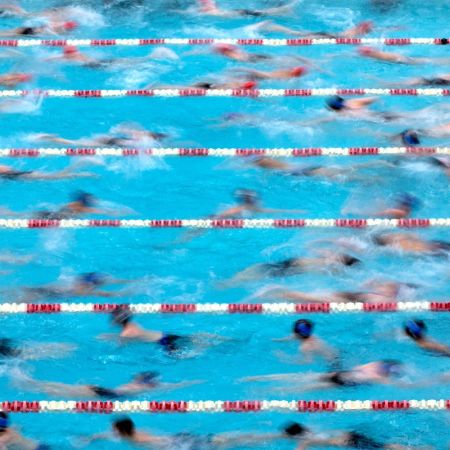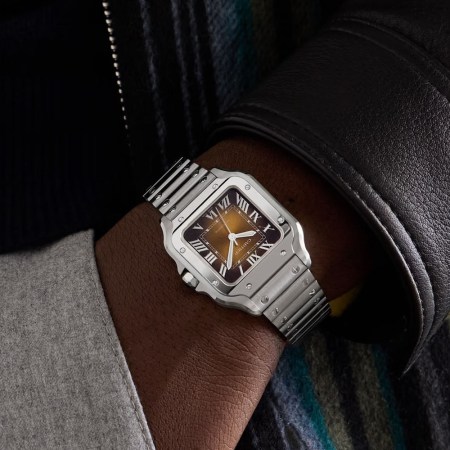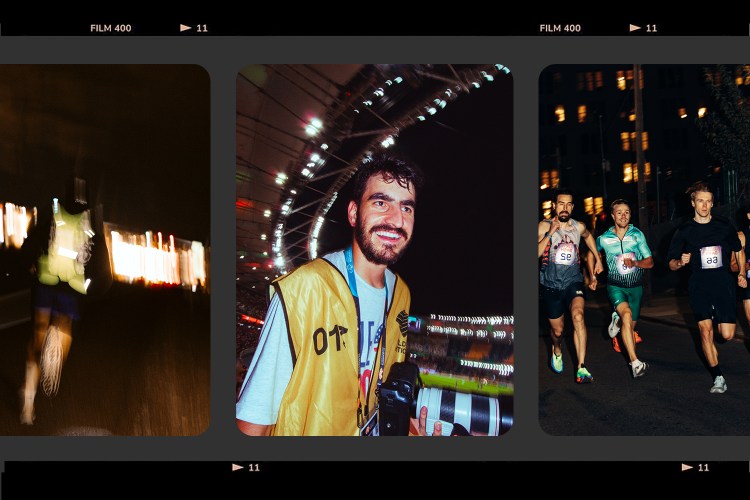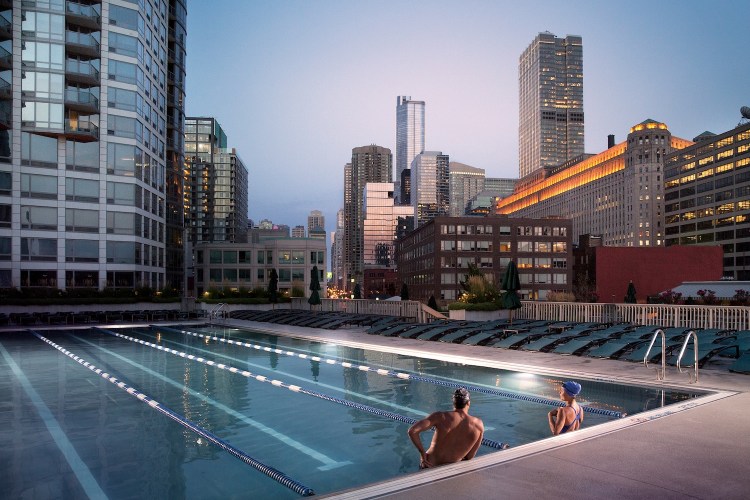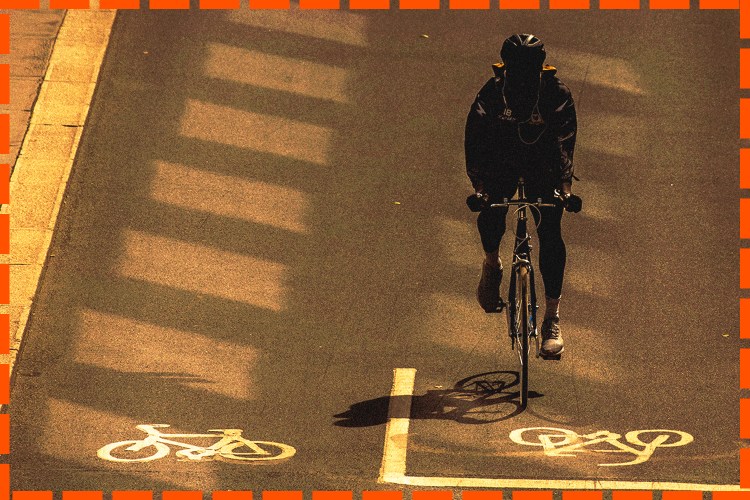Roughly a minute into his ascent to orbit, some 54.4 miles above the blue curve of Earth, astronaut Jameel Janjua snuck a peek out of the spacecraft window. The light up here was different. For the first time ever, he felt like he was really seeing the sky.
“It’s as though somebody is taking the normal nice, bright colors we see, and they’re just being squeezed out of the sky,” Janjua recalls. “You’re watching that in real time: somebody repaint the sky. Just roll over it in black, and it gets blacker and blacker and blacker until it’s the deepest, most pure inky black you can imagine on one side of your view. On the other side, simultaneously, it’s like color is being injected into the earth, and everything becomes more vibrant.”
On Saturday, June 8 at 8:31 a.m., 45-year-old Janjua departed from Spaceport America in New Mexico, piloting a mission to space — for the very first time. It was Virgin Galactic’s 12th spaceflight to date, and its second of the year, a hybrid research and private endeavor in conjunction with Purdue University and UC Berkeley.
Traveling with Janjua and the Virgin Galactic VSS Unity Commander Nicola Pecile were Turkish astronaut Tuva Atasever and three private passengers (like other space tourism companies, Virgin Galactic refers to passengers as “astronauts”). For many of them, the trip was the culmination of a lifetime’s worth of work — and wishes.
For Janjua, the experience of blasting off and reaching speeds of Mach 2.96 surpassed every expectation. “When you release from the mothership and ignite the rocket motor, the acceleration is pure. It’s a good three Gs in your chest,” he says. “For one whole minute, there’s no letting up. Nicola and I spent so much time in the simulator, but this is one of those things that the simulator can’t simulate.”
“There’s a lot to unpack,” he says, recalling the mission some two months later. So much so, in fact, that it wasn’t until a few minutes into the 10-minute trip that Janjua looked back and, seeing his floating passengers, remembered to enjoy microgravity. As pilot, Janjua wasn’t free to move about, but he felt the effects on his body, describing it as similar to feeling your arms float underwater.
In simple terms, Janjua describes the experience of traveling to space as “profoundly emotional.” Both literally and metaphorically, he’d traveled a long way to be there.

Earning His Wings
It’s 2009 and Jameel Janjua is receiving his first colonoscopy. At 30 years old, he isn’t worried about his health. Rather, 17 years after the Canadian Space Agency last opened its books, Janjua is one of four finalists competing for the chance to travel to space. But after beating 5,349 competitors — and undergoing more than his share of invasive medical procedures — Janjua is informed that he is one of two potential astronauts who haven’t made the cut. It’s, in his words, “a kick in the nuts.”
Getting so close but failing to make it was a double blow, as Janjua knew he might never get another chance. Smaller countries like the U.K. and Canada don’t get that many opportunities to run space missions, and there’s only a certain window of time a person is fit enough to work as an astronaut. You might have the potential to become the best astronaut in the world, but as Janjua puts it, you also might “get screwed over based on [the] timing of government funding.”
He points to a Canadian legend, astronaut Chris Hadfield. At the time of Hadfield’s selection, a whole crop of people who could have been astronauts were too young for selection. Seventeen years later, when Janjua was getting his colonoscopy, this entire class had aged out and missed their window. The chances of landing in the right place in history at the right age are miniscule.
Janjua’s grandparents had emigrated from India prior to the country’s partition, settling in Tanzania. His parents later left Tanzania and landed in Alberta, where Jameel and his brother were born. Janjua caught the space bug early on, learning to fly at 16 before gaining engineering degrees from the Royal Military College of Canada and the Massachusetts Institute of Technology.
At the same time, he threw himself into a military career, serving in the Royal Canadian Air Force Air Force. To date, he has exceeded 5,300 flying hours in over 65 different aircraft from the F-16 Viper to the Tornado GR4 — just not, in 2009, anything resembling a space ship.
When his own hopes crashed and burned, Janjua went on exchange to the British RAF, where he saw combat deployments in Afghanistan and Libya. Afterwards, he took a role as a test pilot with the U.S. Air Force, flying F-16 Vipers out of California’s storied Edwards Air Force Base. And then the world changed.
“I had no idea when I was 30 years old that there would be a commercial spaceflight industry that required pilots with very specific skills to fly a winged vehicle with a rocket motor in it,” says Janjua.
It was in 2018 at Edwards Air Force Base that then-Major Janjua learned that Richard Branson’s Virgin Galactic was carrying out tests for suborbital flights in the nearby Mojave Desert. Janjua took the day off and drove out to watch the launch with his son. Inspired, he applied to the Virgin Galactic Pilot Corps. This time, he made it.
Thanks to billionaire-backed breakthroughs in suborbital space travel, after more than a decade and a half on the sidelines, and three years of learning the ropes, Janjua made history this year as the first Canadian — and the first immigrant of Tanzanian descent — to pilot a spaceship. And at 45, Janjua is half a generation younger than the average commercial space pilot. Finally, his persistence had paid off.
Inside the Navy SEALs’ Mythical “Monster Mash” Marathon
Former SEAL Jonathan Wilson breaks down the grueling training exercise, and the 211-mile Veterans Day challenge it inspiredAboard the VSS Unity
These days, when we talk about a “space race,” we’re less likely to be talking about Cold War tensions, or even contemporary projects to clean up space debris or blanket the sky in satellites, than the race to colonize the space tourism trade. By 2022, the global space tourism market was valued at $695 million. It’s projected to reach $8.67 billion by 2030.
The quest to run passenger trips into the black beyond holds a specific appeal for the planet’s richest men, from Jeff Bezos to Elon Musk. Naturally, developing a fleet of space ships requires a lot of capital. But there’s something else. It could be that these tech billionaires want to conquer all, or perhaps that they see themselves as the last explorers, drawn by the strange siren call of space.
Either way, Virgin Galactic, the dream of British billionaire Richard Branson, has had a storied path to the stars. A number of setbacks marred the early days of the company, and in May 2023, Virgin Orbit — a tangential company that provided launch services for satellites — became defunct. But on July 11, 2021, Virgin Galactic launched its first successful passenger flight, with Branson himself on board — as well as two pilots and three other passengers.
Branson’s company is unique among its competitors. The VSS Unity SpaceShipTwo (retired after Janjua’s flight) was the only commercial suborbital craft to actually be flown by human pilots; Blue Origin and SpaceX shuttles are fully automated with only passengers on board.
The Unity also differed in its design. While competitors rely on rockets to get their passengers off the ground, the Unity was towed to the relevant altitude by an airplane, which then released the spacecraft. Only then do pilots like Janjua ignite the spacecraft’s engines, piloting it straight up to where the blue of our atmosphere meets the black of space. (Although, unlike Blue Origin and SpaceX, the Unity never passed the Kármán line, the Fédération Aéronautique Internationale’s defined space boundary of 62.1 miles or 100 km above sea level.)
After experiencing a few minutes of weightlessness, passengers in the Unity then gently glide back down to Earth.

“Send Me Back”
It’s a cliche, perhaps, to say that seeing Earth from space makes one feel insignificant — although, after flying as a guest on a Blue Origin mission, actor William Shatner likened the experience to “a funeral,” saying: “When I looked…into space, there was no mystery, no majestic awe to behold…all I saw was death.”
Looking back over photographs from the mission, Janjua offers a slightly less morbid take on our shared vulnerability. “I look at the dimensions of the atmosphere and I know that everybody I’ve ever met, every human I’ve ever spoken with, every pet I’ve ever had, every piece of fruit or vegetable I’ve ever eaten, would not have existed if it weren’t for that right combination of gasses that are trapped around the Earth,” he says.
As for having waited 45 years to get there, he says he’s achieved a new level of appreciation as to how important each building block was that led to this moment. As a life experience, he likens it only to the birth of his children. “There’s a profound sense of humility,” he says. “In that moment of being up there you think, ‘Holy cow, I’m small, and we’re in this relatively small spaceship with five other people, and we just came from that planet, and now we’re looking at it, and it looks pretty cool.’”
The privatization of space travel has given Janjua the opportunity to achieve his dreams, to make those building blocks add up to something more than a badass resume. But this is about more than a guy finally getting his shot: as a descendent of an Indian-Tanzanian family, Janjua sees his mission as democratizing space travel.
“We are on the cusp, an inflection point in history and society where we’re going to open up access to space for people that might never have imagined that it was for them,” he says.
Already, Turkish astronaut Tuva Atasever, a 31-year-old engineer, has accompanied Janjua on the Galactic 07 mission, becoming Turkey’s second-ever astronaut. Also on board were an Israeli-American, an Italian and an American of Indian descent. Janjua had dinner with these astronauts in the run-up to the mission and says a lot of their discussions touched on, at least peripherally, the idea of opening space up to people from increasingly diverse backgrounds.
“Our conversations spoke to a new age of spacefaring that is with these vastly different stories,” he says.
He recalls a conversation in which Atasever told him: “I come from a country of 90 million people with the youngest demographic in Europe, and they used to think that space travel was a thing for Americans. But I grew up where they grew up and now I can speak to them about it in their own language.”
“I really internalize that,” Janjua says. “This has been a great opportunity, and I do feel a social responsibility to speak to people who come from varied backgrounds. I’m most optimistic about the future of space exploration because now I’ve seen it with my own eyes. People will find their own value in this. It’s now on us to present it to them and make it accessible.”
Back on terra firma for the time being, Janjua is pursuing an MBA in business from the Wharton School at the University of Pennsylvania. Virgin Galactic will now dedicate resources fully to the production of the next generation Delta Class spaceships, and Janjua will also be working as a test pilot.
Janjua says he hopes to fly again, though it isn’t his place to pin down when that might be. But it’s clear the old dream is more alive than ever — that after all this time spent waiting, there’s no such thing as enough space.
“I would love to hear of somebody who had been to space who didn’t say ‘Send me back,’” he says. “Send me back countless times.”
This article was featured in the InsideHook newsletter. Sign up now.

